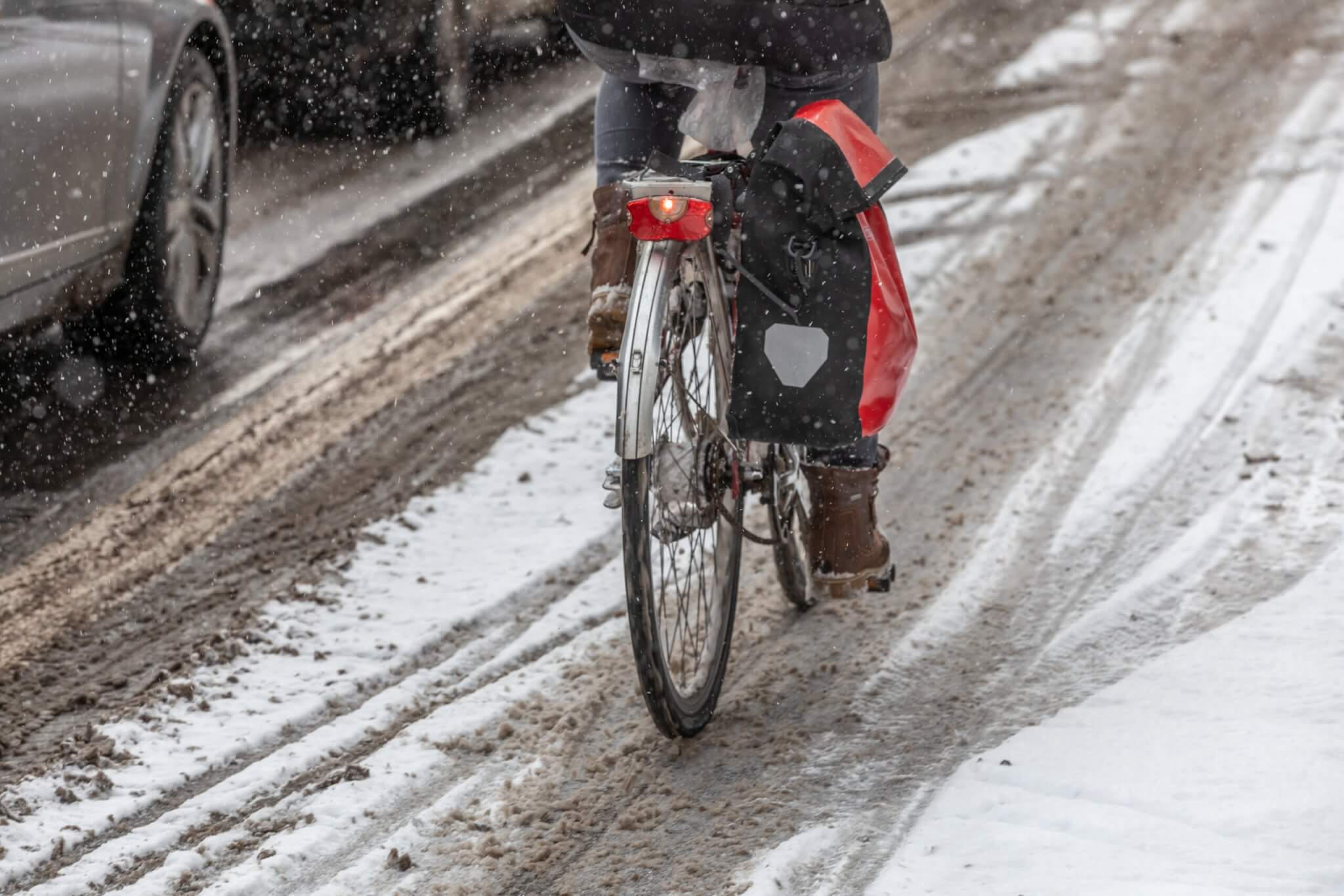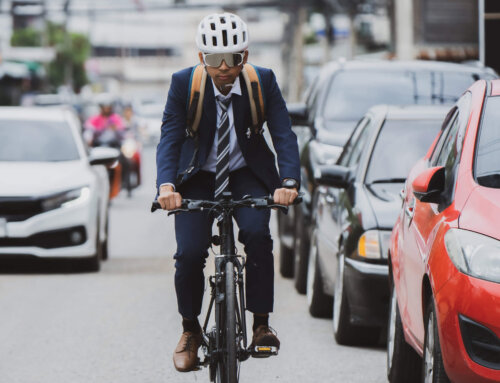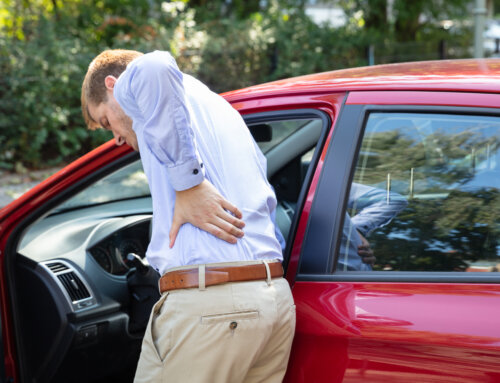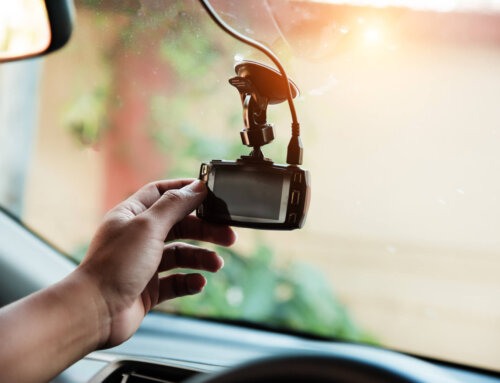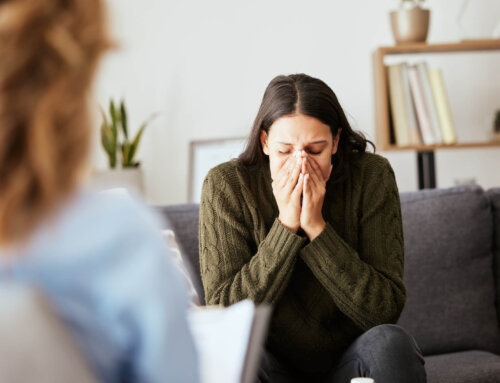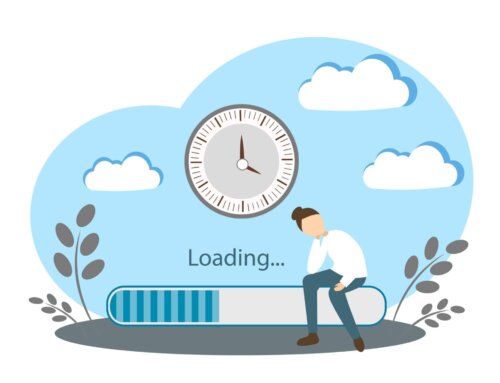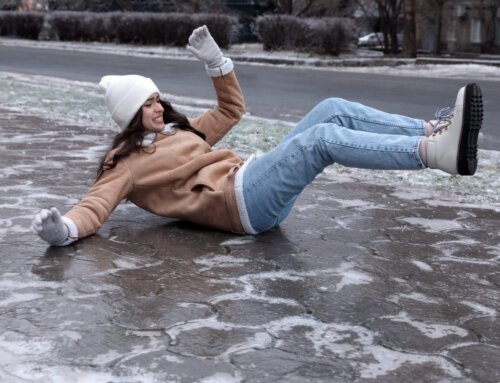Did you know there are more cycling accidents on the UK’s roads during the spring and summer than in autumn and winter?
If that comes as a surprise to you, the fact that the casualty rate is higher over autumn and winter in terms of miles travelled probably doesn’t. Limited daylight hours, reduced visibility, and harsher road conditions combine to make cycling more challenging from September to April.
Serious cycling accident injuries often involve head injuries, spinal injuries, deep lacerations, and, in some cases, fatal injuries. Even minor cycling accidents can cause broken bones, cuts, and soft tissue injuries.
The psychological effect of cycling accidents can be long-lasting, even if the physical injuries themselves are not serious.
The law states that cyclists must use white front and red rear lights after dark and wear reflective gear. However, many riders don’t make the necessary adjustments or take precautions to handle winter cycling’s challenges.
Wet wintry conditions significantly impact braking performance and increase stopping distances.
As a cyclist, you must know how to stay safe during these tricky months, whether you ride every day or just at weekends.
This blog covers every aspect of winter cycling safety. You’ll learn about choosing the right gear and doing what you can to avoid accidents (although you can’t legislate for what other road users do). We’ll also explain what to do if you are involved in a road traffic accident and the steps you need to take to bring a successful cycling accident claim.
Essential Winter Bike Safety Checks
Bike maintenance plays a significant role in preventing cycling accidents. Here are some safety checks that hopefully help you avoid an accident you could have prevented.
Pre-ride inspection checklist
These are vital checks to carry out before you head out in wintry conditions:
- Check tyre pressures and wear; understand that braking distance increases exponentially in wet conditions
- Look for debris that’s become lodged in your brake pads
- Examine your chain for wear and that it’s sufficiently lubricated
- Test all lights and reflectors
- Check that the mudguards are correctly attached
Winter-specific maintenance tips
Your bike needs extra care in winter. Regular cleaning becomes vital, as water mixed with road salt can damage your bike’s moving parts. More importantly, a clean and properly lubricated chain will help your drivetrain last longer.
Keep your tyre pressure slightly below summer levels to improve traction on slippery surfaces. Use appropriate wet-weather lubricants on your chain and cables to prevent rust and ensure smooth operations!
Upgrading your bike for winter conditions
Winter-oriented upgrades can significantly reduce your risk of road traffic accidents.
Full-length mudguards are a great start in this respect, as they protect you and your bike’s components from spray and salt.
Winter-specific tyres with deeper tread patterns and softer rubber compounds grip the road better, and they often come with reflective strips that enhance low-light visibility. If your bike supports disc brakes, upgrading them can give you more consistent stopping power in wet weather.
After each ride, storing your bike in a well-ventilated space helps prevent moisture build-up. This simple practice can protect you from bike component failure and serious accidents.
Preventing Road Traffic Accidents in Winter
Winter cycling brings unique challenges that require focused concentration. Statistics show cyclists are 20-38 times more likely to fall in snowy or icy conditions than in other weather.
High-risk winter scenarios
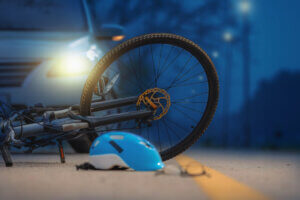
Defensive cycling techniques
These defensive techniques will help protect you from potential cycling claims:
- Keep your speed at one-third of what you usually ride on potentially icy surfaces.
- Keep your balance evenly distributed between the front and rear wheels
- Don’t brake suddenly, especially on your front wheel
- Stay away from road gutters where ice forms first
- Make eye contact with drivers to make sure they see you
Route planning and risk assessment
Some routes are riskier than others, no matter how careful you are. Therefore, main roads are often safer for cycling because they get regular gritting treatment. It’s worth mentioning that quiet back roads look appealing but rarely get winter maintenance.
These factors matter when planning your ride:
- Check last night’s temperatures to spot possible ice formation
- Skip routes with steep descents or sharp bends
- Pick well-lit paths with steady traffic flow
- Avoid spots where water could pool and freeze
Valley bottoms and bridges typically get icy before other road sections. You might have to change your route or timing to find safer cycling conditions.
Protective Gear to Prevent Broken Bones
You need more than simple safety gear to protect yourself from cycling accidents. Studies reveal that limb injuries make up 40% of all cycling accidents. Most injuries happen to shoulders, elbows, knees, and hip areas.
Impact protection essentials
Protective cycling clothing has significantly improved over the past few years. Some companies now manufacture modern base layers with impact-absorbing polymers. These provide up to 80% protection to vulnerable areas. The advanced materials become toughened on impact and spread the force across the protective areas, protecting limbs from serious damage.
Visibility equipment requirements law requires your bicycle to have:
The law requires you to have:
- White front and red rear lights (mandatory between sunset and sunrise)
- Red rear reflector
- Amber pedal reflectors (for bikes manufactured after 1/10/85)
The law doesn’t require cyclists to wear light-coloured or fluorescent clothing. However, wearing it during daylight and in poor visibility helps keep you visible to other road users.
If you have an accident, the fact you were wearing clothing that made you easy to see will help your case if another road user collides with you and you end up bringing a cycling claim. One of the main arguments used by motorists who cause cycling accidents is that they didn’t see the cyclist. Wearing the proper clothing can defeat that argument!
Weather-appropriate safety gear
Winter conditions demand proper layering. Your hands and feet need extra attention because getting cold extremities can affect bike control. Waterproof gloves with silicone grip sections and overshoes are a great way to keep your extremities warm and dry.
A quality waterproof jacket with taped seams helps shield you from harsh weather. Thermal skull caps or cycling caps under your helmet give vital warmth without reducing safety.
Research shows that reflective markings on ankles and knees work best at night.
What to Do If an Accident Occurs
What you do immediately after a cycling accident can affect your safety and your chances of getting compensation. Let’s look at the key steps you should take.
Immediate post-accident steps
- Move to safety if possible
- Assess yourself for injuries
- Call emergency services if they are required
- Exchange details with others in the accident
- Take photos of the scene and damage to your bicycle and other vehicles.
Gathering this information is essential. Many cycling accident claims fail because people don’t have enough evidence. You must get the other vehicle’s registration number and the driver’s contact details, even if your injuries seem minor.
Gather evidence for claims
Getting together a complete set of evidence will make your compensation claim stronger. Take clear photos of:
- Your injuries and any damaged equipment
- The accident scene from various angles
- Road conditions and any hazards
- Vehicle positions and damage
Get contact details from witnesses because their unbiased accounts can support your claim. You must get any available CCTV footage as soon as possible since some systems delete recordings quickly, often within a week.
Get immediate medical treatment for your injuries
If you suffer injury in a cycling accident, you must get medical attention straight away, even if you believe you only have minor injuries. Early symptoms don’t always tell the whole story, and your injury may be worse than you first thought. Remember, too, that the medical records detailing your attendance at a hospital or your GP surgery will be helpful evidence in the event of a cycling accident claim. Keep detailed records of:
- A&E or GP medical examinations
- Treatment plans and medications
- Follow-up appointments
- Recovery progress
If you can, keep a diary of your symptoms on a daily basis. You may find doing this therapeutic. The diary also provides a contemporaneous record that can be used as evidence when claiming compensation because it demonstrates how the accident affected your daily life.
Summary
Cycling your way safely through a British winter requires you to:
- ensure your bike is kept in good working order,
- wear proper protective gear,
- be visible and
- make sure your lights and reflectors are in top condition and used not just when the law says they need to be but also when commonsense dictates they should be.
These steps could make the difference between having a safe cycling experience and having an accident.
Adopting a calm approach and following proper procedures will hold you in good stead if you have a cycling accident. Put your health first; get checked over, or seek immediate medical attention if it’s a more serious injury.
No cyclist wants to make an accident claim, but if you suffer injury in a cycling accident caused by one of your fellow road users, seek out the services of an experienced, specialist firm of cycling accident solicitors, like Mooneerams.
Mooneerams Solicitors only handles personal injury claims. So, if you need us to help you start a claim or initially to get advice, call 029 2199 1927 or fill in the enquiry form on this page, leaving your contact details, and we’ll get back to you.
We handle most cycling accident claims on a No Win No Fee basis.

